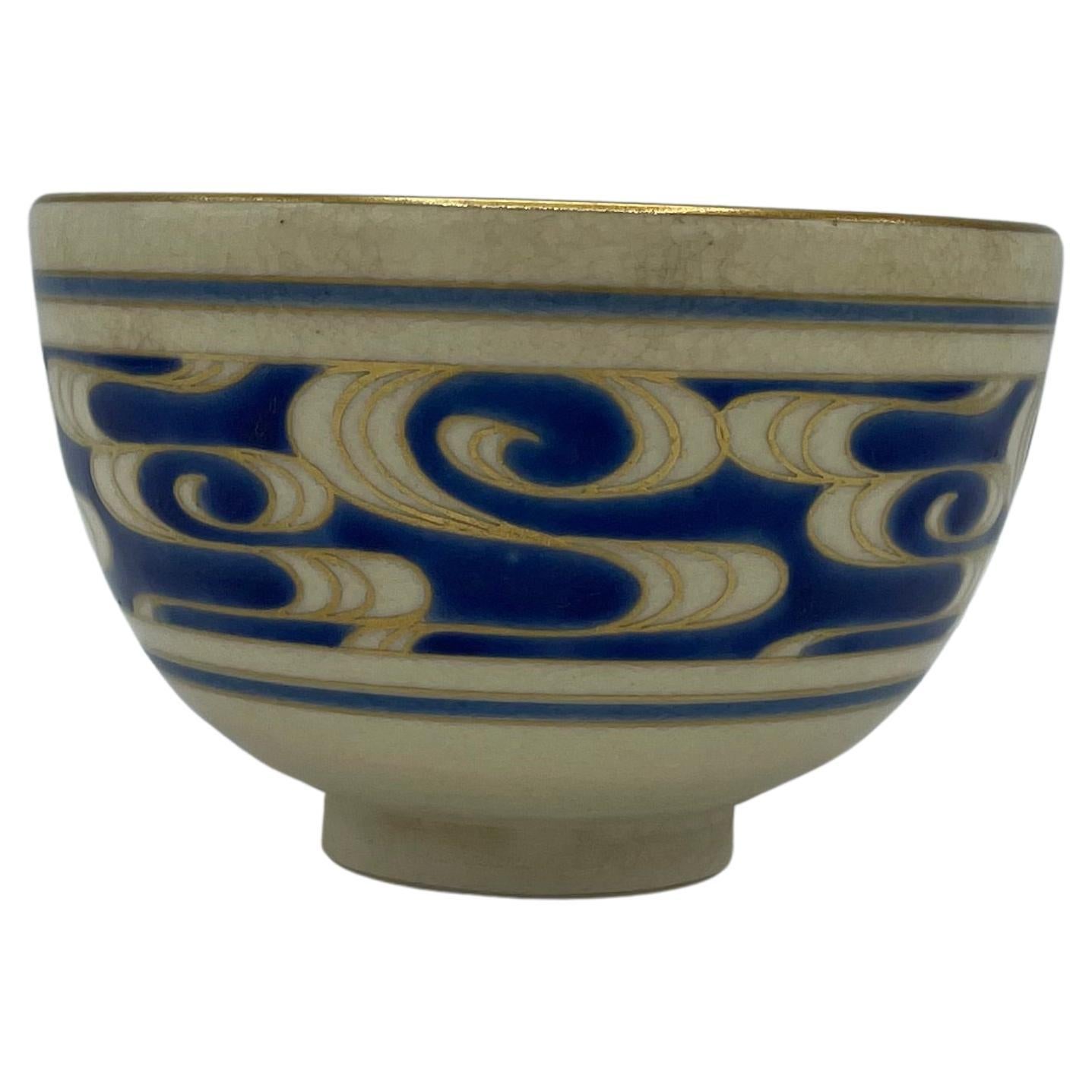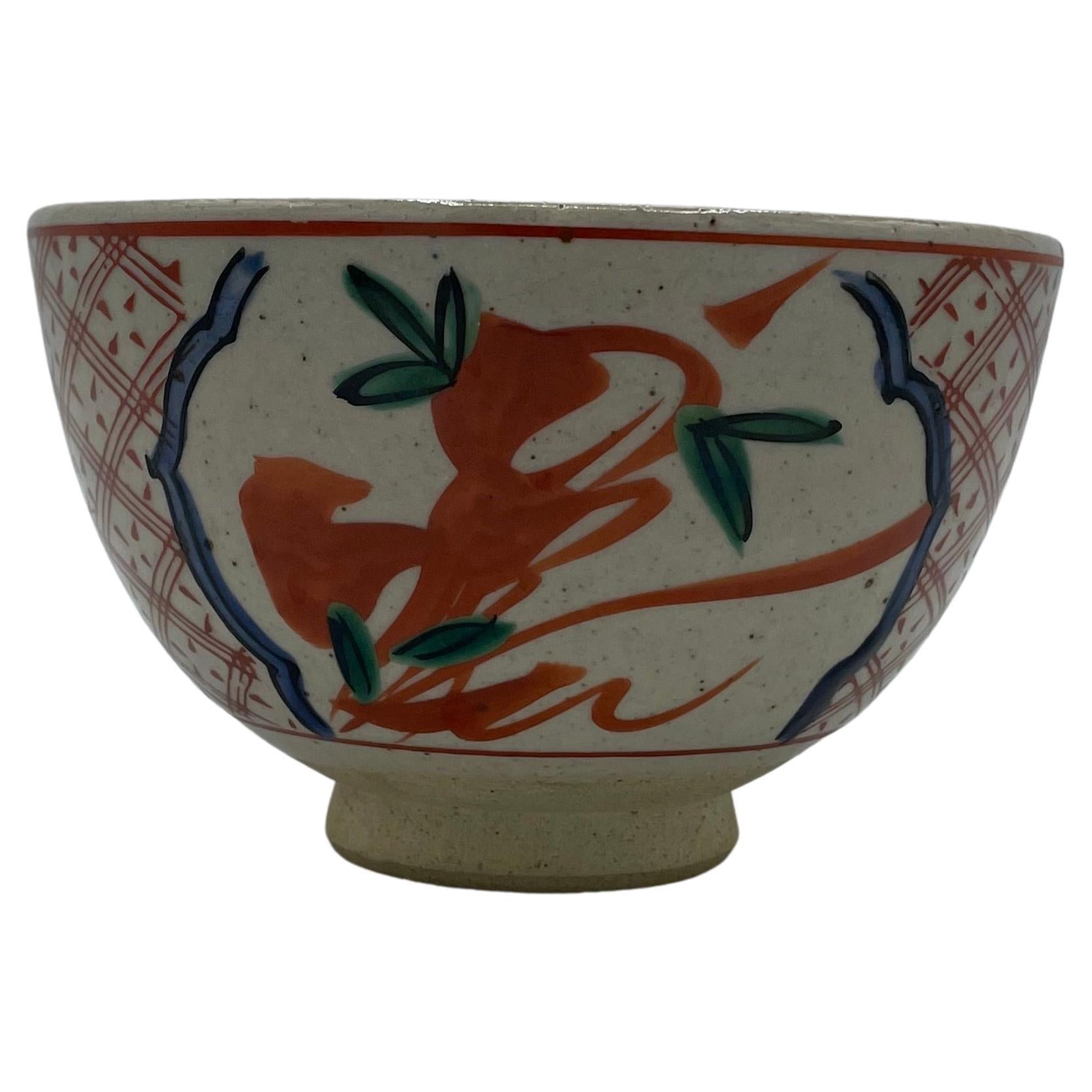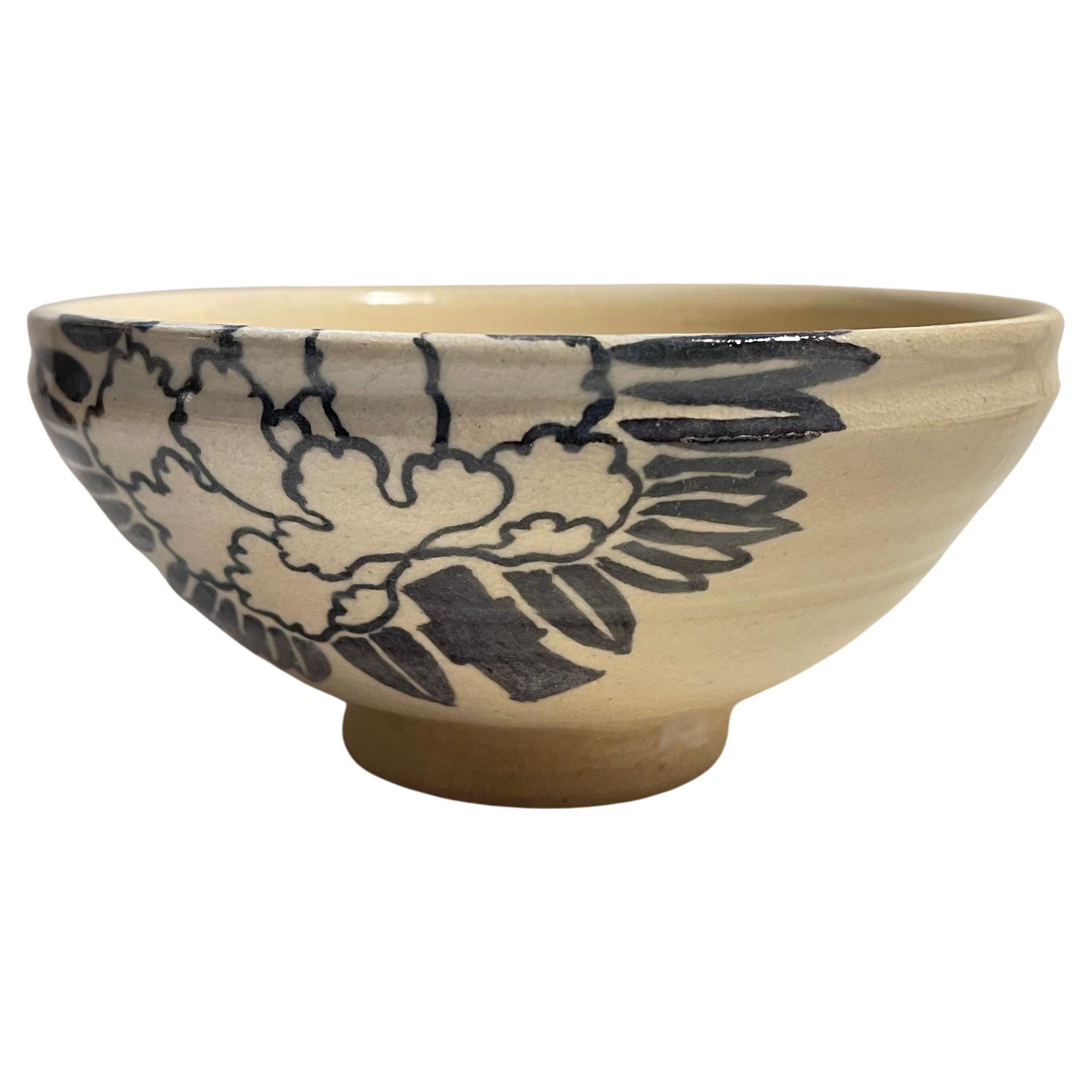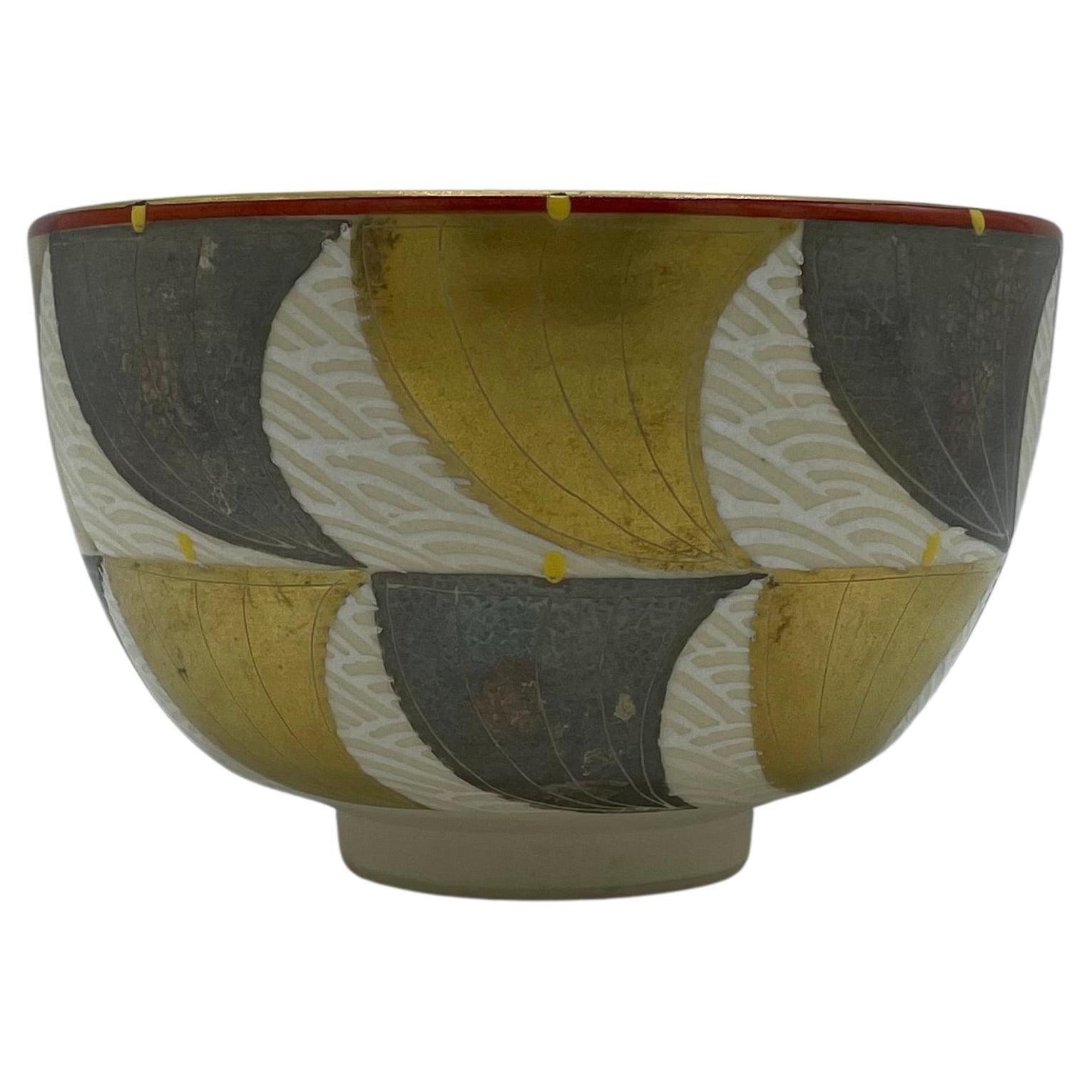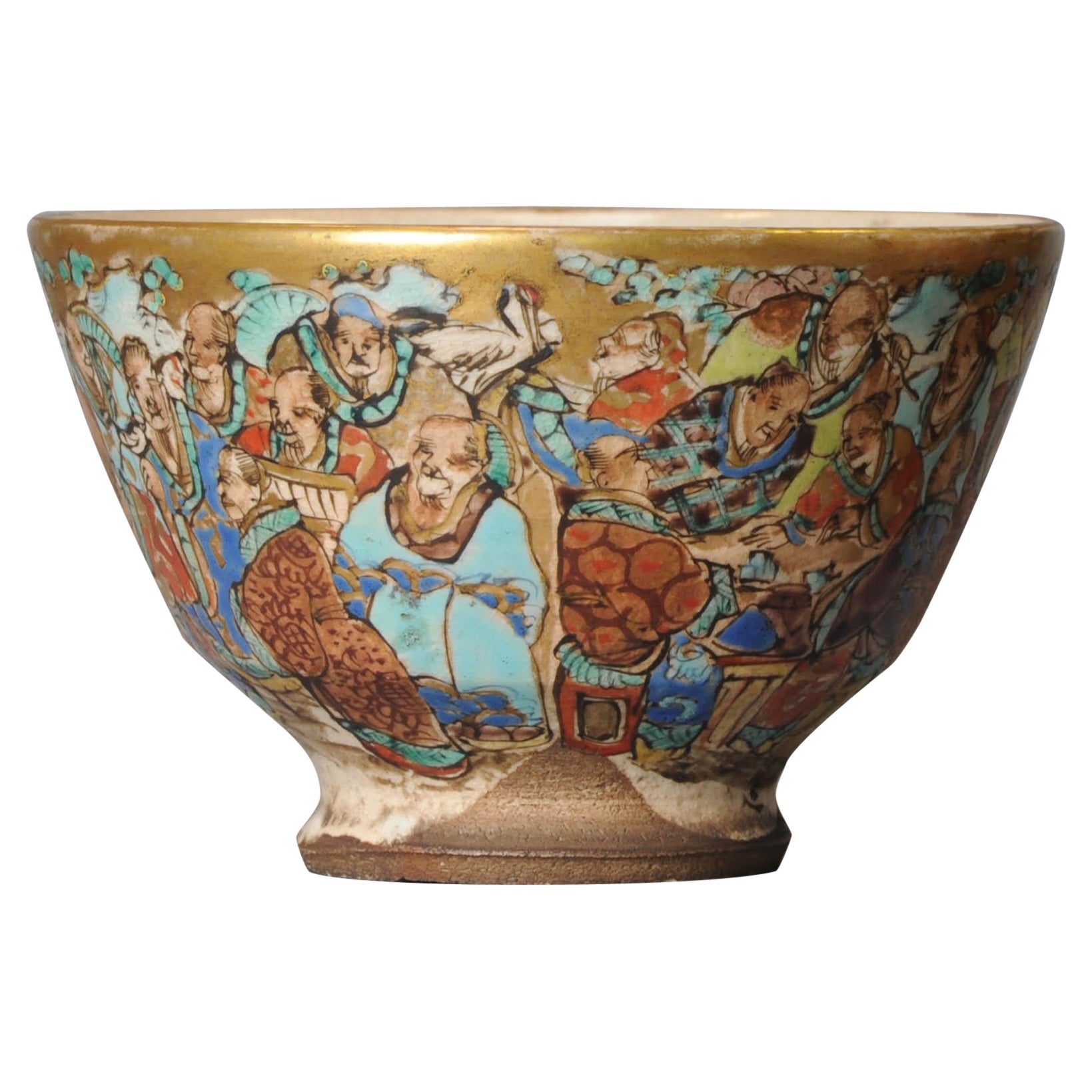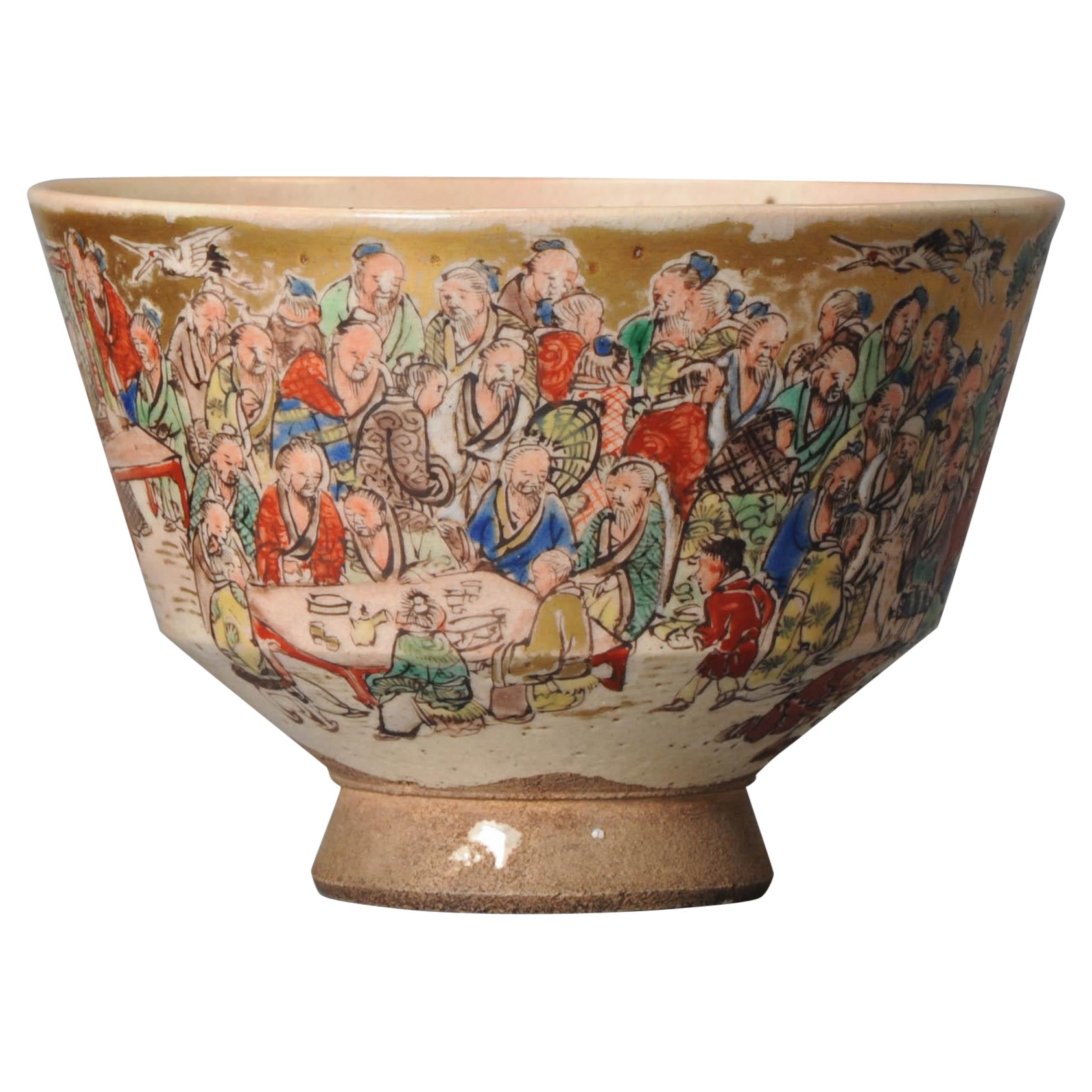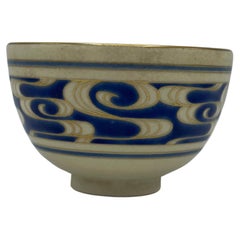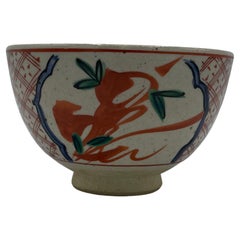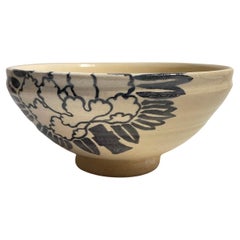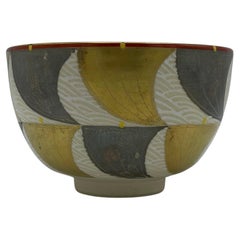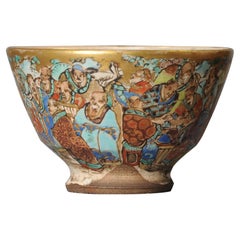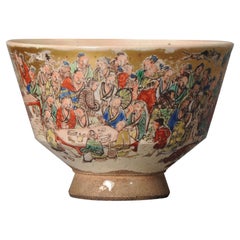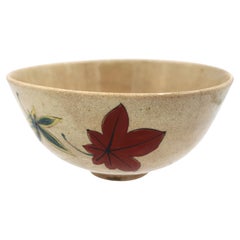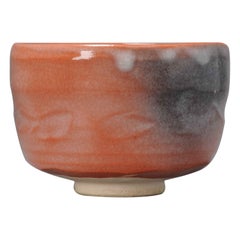Items Similar to Japanese Matcha Bowl for Tea Ceremony FUJIN Kyo-kiyomizu Narutakigama
Want more images or videos?
Request additional images or videos from the seller
1 of 7
Japanese Matcha Bowl for Tea Ceremony FUJIN Kyo-kiyomizu Narutakigama
$695.52
£517.40
€580
CA$952.41
A$1,058.95
CHF 552.93
MX$12,890
NOK 7,055.09
SEK 6,610.28
DKK 4,415.22
Shipping
Retrieving quote...The 1stDibs Promise:
Authenticity Guarantee,
Money-Back Guarantee,
24-Hour Cancellation
About the Item
This is a matcha bowl which we use for tea ceremony. This is all hand painted and it was made with style Kyo-kiyomizu, Narutaki gama which was made in Kyoto prefecture.
And the design is called Fujin.
This bowl was made around 1990s in Showa era in Japan.
This is made with porcelain.
Dimensions: H7.5 x 12.3 x 12.3 cm
Fūjin, sometimes also known as Ryobu, is the Japanese god of the wind and one of the eldest Shinto gods. He is portrayed as a terrifying wizardly demon, resembling a red-haired, green-skinned humanoid wearing a tiger or leopard skin loincloth/kilt, carrying a large bag of winds on his shoulders. In Japanese art, the deity is often depicted together with Raijin, the god of lightning, thunder and storms. (by wikipedia)
- Dimensions:Height: 2.96 in (7.5 cm)Width: 4.85 in (12.3 cm)Depth: 4.85 in (12.3 cm)
- Style:Showa (Of the Period)
- Materials and Techniques:
- Place of Origin:
- Period:1990-1999
- Date of Manufacture:1990
- Condition:As this is not a new item, there might be some scratches.
- Seller Location:Paris, FR
- Reference Number:1stDibs: LU6325241058062
About the Seller
5.0
Vetted Professional Seller
Every seller passes strict standards for authenticity and reliability
1stDibs seller since 2022
50 sales on 1stDibs
- ShippingRetrieving quote...Shipping from: Paris, France
- Return Policy
Authenticity Guarantee
In the unlikely event there’s an issue with an item’s authenticity, contact us within 1 year for a full refund. DetailsMoney-Back Guarantee
If your item is not as described, is damaged in transit, or does not arrive, contact us within 7 days for a full refund. Details24-Hour Cancellation
You have a 24-hour grace period in which to reconsider your purchase, with no questions asked.Vetted Professional Sellers
Our world-class sellers must adhere to strict standards for service and quality, maintaining the integrity of our listings.Price-Match Guarantee
If you find that a seller listed the same item for a lower price elsewhere, we’ll match it.Trusted Global Delivery
Our best-in-class carrier network provides specialized shipping options worldwide, including custom delivery.More From This Seller
View AllJapanese Antique Matcha Tea Bowl for Tea ceremony 1970s
Located in Paris, FR
This is a matcha bowl for tea ceremony.
This bowl is made with porcelain and it was made around 1970s in Showa era.
Dimensions: 12 x 12 x H7,5 cm
Category
Late 20th Century Japanese Showa Pottery
Materials
Porcelain
Japanese Matcha Bowl for Tea Ceremony 1990s Heisei Mizuho
Located in Paris, FR
This is a matcha bowl which we use during a tea ceremony in Japan.
There are a signature written on the bottom of this bowl 'Mizuho'.
This matcha bowl was made in Japan around 1990s ...
Category
1990s Japanese Decorative Bowls
Materials
Porcelain
Japanese Matcha Bowl for Tea Ceremony 1980s Showa
Located in Paris, FR
This is a matcha bowl which we use for tea ceremony.
This bowl was made around 1980s in Showa era in Japan.
This is made with porcelain.
Dimensions: 13x 13 x H 6 cm
Category
Vintage 1980s Japanese Showa Porcelain
Materials
Porcelain
Japanese Porcelain Matcha Bowl for Tea Ceremony Kyo Ware Toraku MORISATO
Located in Paris, FR
This is a bowl that we use during tea ceremony. This is made with porcelain and it was made around 1980 in Showa era. This bowl has a style Kyo raku. It is called Kyo ware and it was...
Category
Vintage 1980s Japanese Showa Decorative Bowls
Materials
Porcelain
Japanese Porcelaine Matcha Bowl for Tea Ceremony 1980s Matsuoka Kato Kyo Ware
Located in Paris, FR
This is a matcha bowl which we use for tea ceremony.
This bowl was made around 1980s in Showa era in Japan.
This bowl was made with a style called Kyo yaki. And it is made by an arti...
Category
Vintage 1980s Japanese Showa Serving Pieces
Materials
Porcelain
Japanese Vintage Matcha Bowl 1980s Gold fish Kyo-Kiyomizu style
Located in Paris, FR
This is a Matcha bowl which we use for tea ceremony and this bowl was made in Japan around 1980s in Showa era.
This bowl is made with Style Kyo-Kiyomizu.
Kyo-kiyomizu style is made i...
Category
Vintage 1980s Japanese Showa Porcelain
Materials
Porcelain
$306 Sale Price
20% Off
You May Also Like
Antique Meiji Japanese Satsuma Tea Bowl in the Style of Ninshei Nonomura, 19C
Located in Amsterdam, Noord Holland
Introducing this rare and exquisite bowl from Meiji period, dating back to the 19th century.
Additional information:
Material: Porcelain & Pottery
Region of Origin: Japan
Period: 19...
Category
Antique 19th Century Japanese Meiji Tea Sets
Materials
Porcelain
$1,820 Sale Price
20% Off
Antique Meiji Japanese Satsuma Tea Bowl in the Style of Ninshei Nonomura
Located in Amsterdam, Noord Holland
Introducing this rare and exquisite bowl from Meiji period, dating back to the 19th century.
Additional information:
Material: Porcelain & Pottery
Region of Origin: Japan
Period: 19...
Category
Antique 19th Century Japanese Meiji Tea Sets
Materials
Porcelain
$1,820 Sale Price
20% Off
Circa 1850 Kiyomizu Chawan or Tea Ceremony Bowl
Located in Chapel Hill, NC
Circa 1850 Kiyomizu Chawan or Tea Ceremony Bowl, Kyoto, Japan. A rare example, late Edo period. Incredibly light pottery, elegant crackle glaze & restrained decoration of a few leave...
Category
Antique 1850s Japanese Other Pottery
Materials
Pottery
$360 Sale Price
20% Off
Vintage Japanese Period Chawan Tea Bowl with Tomobako, 20th Century
Located in Amsterdam, Noord Holland
A very nice tea bowl
Additional information:
Material: Porcelain & Pottery
Type: Bowls, Tea/Coffee Drinking: Bowls, Cups & Teapots
Region of Origin: Japan
Period: 20th century Meiji...
Category
20th Century Japanese Serving Bowls
Materials
Porcelain
$238 Sale Price
20% Off
Japanese Taisho Period Tea Bowl in Tomobako, Earthenware Japan Tea
Located in Amsterdam, Noord Holland
Japanese Taisho Period Tea Bowl in Tomobako,Earthenware Japan Tea.
A very nice tea bowl
The box is included
Additional information:
Material:...
Category
20th Century Japanese Tea Sets
Materials
Porcelain
$718 Sale Price
20% Off
Japanese Ceramic Bowl Makuzu Kozan Utusushi Kenzan
By Makuzu Kozan
Located in Atlanta, GA
A rare ceramic bowl with overglaze paint decoration by Japanese imperial potter Makuzu Kozan ((1842–1916). Unlike the better-known works Kozan made for the expositions in the west and export to the foreign market, this piece exemplifies his work for the domestic market and the tea ceremony. The bowl was made in the so called "Utusushi" Ogata Kenzan (1663-1743), a celebrated Edo painter and ceramicist. Utusushi is loosely translated as "in the spirit of". It is not at all a simple imitation of a master, but a Japanese concept of embracing the spiritual essence of a master while the creator is free to mix in his or her own unique artistic interpretation and flavor.
The bowl was made to hold fruits during the tea ceremony. It has a very distinguished form with a circular lower body morphing into a square upper portion that further opening with flared rim. The surface has a grey glaze onto which Asagao flowers (Japanese morning glory) on the vines were painted in a free and poetic style. White was used for the petals, green for the leaves with touches of gold highlight. Asagao, the symbol of the summer was rendered in the spirit of Ogata Kenzan, and interestingly the shape of the blossom echoes the unique form the bowl. It was likely reserved for the tea ceremony during the summer months.
Under the base, Kozan was signed in black on a white porcelain plaque inlay.
For two similar examples of Kozan's work Utusushi Kenzan, see Page 168-169 of the book: Sekai ni Aisa Reta ya Kimono Miyagawa Kozan Makuzu...
Category
Antique Early 1900s Japanese Japonisme Ceramics
Materials
Ceramic
